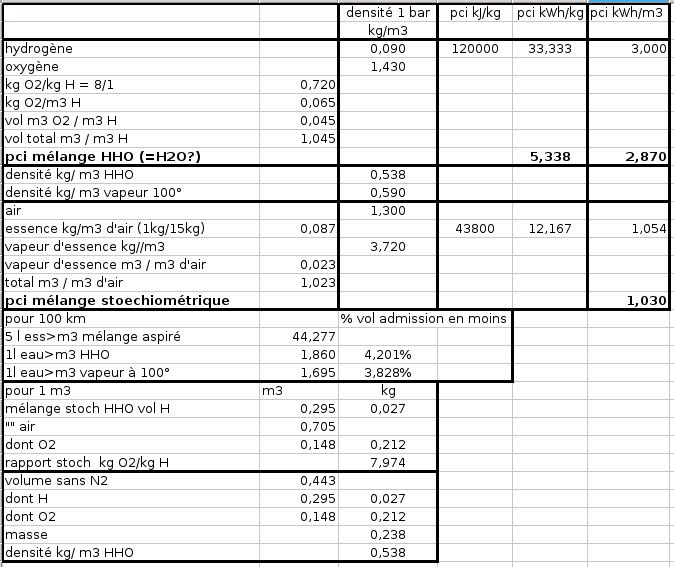Pascalou wrote:The comparison of our system with the HHO generator is very interesting: I noticed that the effects of G. HHO are in fact the same as the Gillier Pantone, thus which strongly supports a presence of hydrogen / oxygen released also by our system. In addition we have very little energy involved for the electrolysis (this electrical energy is low compared to the very superior beneficial effects, you speak of low efficiency but I find that for the derisory electrical energy invested, we have a very good "yield"). Of course the electrolysis has a negative performance, yet the results are present, that means that this hydrogen, even in small quantities, has a very beneficial effect on the engine / combustion.
You should read this post (just a little long ....
The possible dissociation of water in the engine does not require so much energy since the steam is already preheated at the exhaust. (and in this case the warmer it is, the better) ...
It is more complicated than that, no one has demonstrated with its consumption, that the hotter the steam the less it consumes. Rather, there is a temperature range in which it works. Below a minimum (70 ° C?) It drowns the reactor, above (170 ° C?) It brings nothing more.
The possible dissociation of water in the engine does not require so much energy since the steam is already preheated at the exhaust.
Your vapor and water droplet mixture represents a very small volume compared to the intake air with which it mixes and cools. Should assess how much energy is actually provided, it still seems that we are quite far from heating to 2000 ° C in the combustion chamber ....





